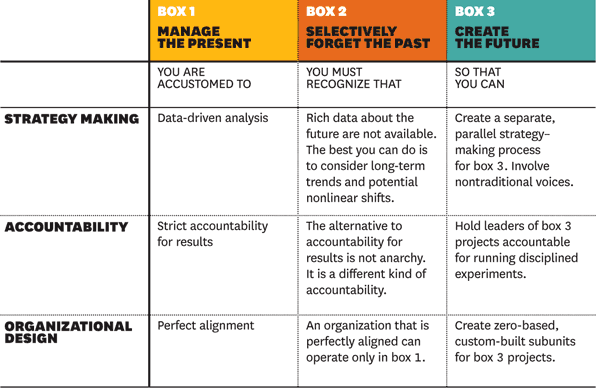- Media consumption is increasingly personalized, with concentrated real-time mass audiences disappearing, and new consumption dynamics emerging;
- Business is more dependent than ever on data intelligence and analytics, which combined with media fractionalization result in new measures of performance and currency;
- Fundamental shifts in consumer behavior are resulting in declining relevance to purchase decisions of historic brand equity;
- Buying decisions are more well-researched and also more short-term, resulting in consumers being less influenced by traditional advertising campaigns and marketing programs.
Is More and Better Data Management the Solution for Future Growth?
Companies are responding to these new realities, but successful long-term strategies are not apparent, even to the most astute visionaries. The answers, and the most imperative solutions, lie in projectable data and new future-looking insights gleaned from artificial intelligence and computer learning. But better data management alone is insufficient to guide decision-making. Marketers, media companies and agencies must fundamentally redesign their business models for the future ecosystem, while acknowledging organizationally that the status quo continues to drive the majority of current revenues (as proven by this year’s national television Upfront market).
So how do companies foster innovation and become more nimbly responsive to rapid fire industry disruption? The Harvard Business Review offers a solution in a 2011 article by Katherine Bell, The Three-Box Approach to Business Model Reinvention: Putting the Idea into Practice. A more detailed guide to follow for senior management is provided in another HBR article The CEO’s Role in Business Model Reinvention.
Defining Your Personal Business Priorities
The article provides a template (see below) for identifying a company’s strategic direction. In simple terms, take out a piece of paper and write down the three most important strategic responsibilities you personally are responsible for performing in your current business role in the next 12 month. Then review them in the context of the below graph and identify whether each goal is focused:
- on current business requirements, is measured by established metrics and analytics, and is perfectly aligned with organizational imperatives;
- is focused on overcoming destructive forces impacting on business growth, anticipates future trends, is measured against future expectations, and while not perfectly aligned within the corporation is clearly identified as a strategic need;
- is experimental, non-traditional, has no performance measure other than breaking out of traditional models; and operates within an independently managed and directed group within the organization.
If every executive in a legacy company were to complete this easy task, results would naturally be predominantly focused on Box 1, which reflects the vast majority of the media industry and is the driving force behind analytically and metrics guided decision-making. Let’s say 70% of a strong company should be centrally organized around Box 1 work. About 20% should be focused on overcoming destructive forces, with 10% focused on experimentation operating outside of the day-to-day business organization, not subject to established performance measures, and designed to develop new businesses than may take as many as five or even ten years to scale to meaningful revenues and profits.
Based on MyersBizNet assessments and business model experiments conducted over the past three decades, today’s leading legacy media and advertising businesses invest an average 85% to 95% of organizational and strategic investments on Box 1 activities – i.e. operating within legacy business models, legacy performance metrics, and legacy organizational structures.
While the average invested by media and advertising companies in Box 2 strategic resources is less than 10%, progressive media and advertising companies should be investing 10% to 20% of their organizational resources on responses to external threats — primarily technological advances – that are disrupting legacy models and organizations. These initiatives typically focus on building digital business-line extensions that can ultimately be integrated into the legacy business ecosystem. Within media and advertising, content marketing, branded entertainment, OTT distribution, social media extensions, and investment new research tools would be defined as Box 2 initiatives.
Companies should be committing as much as 10% to 15% of organizational resources and focus into Box 3 experimentation, innovation and literally out-of-the-organization-box initiatives. The typical media and advertising company invests only 0% to 5% on initiatives that are long-term, are not required to deliver results based on legacy performance standards, and are not required to operate within legacy hierarchical organizations.
As legacy companies, across all business categories, seek to attract young people to their organizations they will find it nearly impossible to compete with entrepreneurially spirited companies that are reverse engineered, with 70% to 80% of their organizations focused on innovation and a long-term business model. These companies are typically creating disruption of traditional businesses and can operate with only a fraction of their organization pursuing short-term revenues via legacy business models, and even then they are typically heavily dependent on innovation to compete effectively.
That’s the conundrum facing large legacy media companies and agencies: how do you compete when current business models will be obsolete or radically altered within a decade, and when the vast majority of revenues now and into the mid-term future require that most of your organizational resources and strategic priorities remain dedicated to and embedded within legacy models? The answer must be to reallocate funding and invest in teams focused exclusively on experimentation and creation of new business models, performance metrics and operational structures.
The Three-Box Approach to Business Model Reinvention

Source: Harvard Business Review, The CEO’s Role in Business Reinvention


